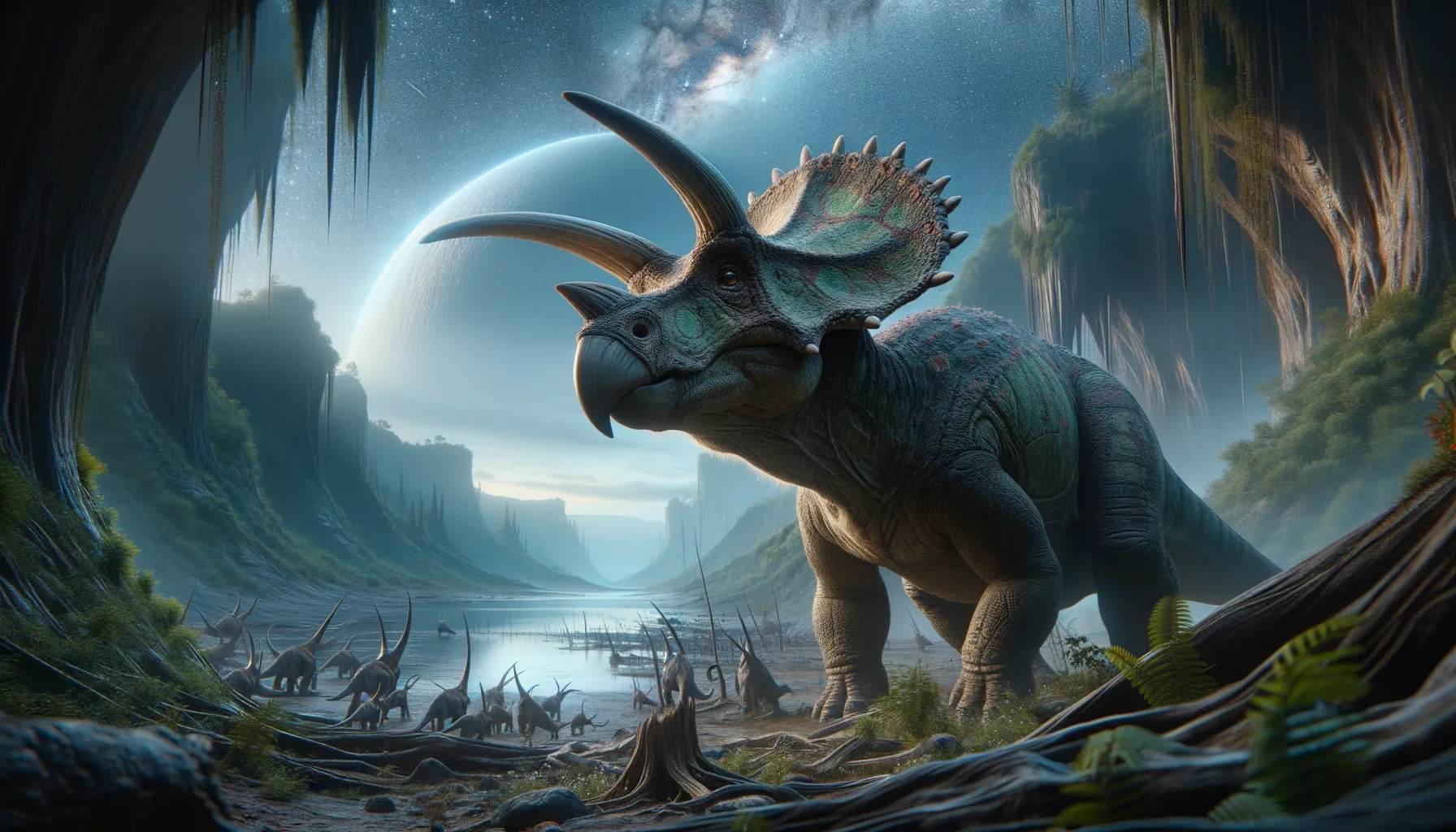
Asiaceratops
Small but significant in dinosaur evolution!
Period
Cretaceous
Length
Measured roughly 2 meters in length.
Height
Stood about 1 meter tall at the hips.
Weight
Estimated to weigh around 150 kilograms.
Asiaceratops was a small ceratopsian dinosaur known from the Cretaceous period. It belonged to a group of herbivorous dinosaurs characterized by their beaked faces and, in some cases, elaborate cranial ornamentation. Like many of its relatives, Asiaceratops had a beak likely used for cropping plants. While not much is known due to fragmentary fossils, it provides critical insights into the early evolutionary stages of ceratopsians in Asia.
Diet
Asiaceratops was herbivorous, feeding primarily on low-growing plants, such as ferns and cycads. Its beak-like mouth suggests it was adept at cropping vegetation.
Hunting
As a herbivore, Asiaceratops did not engage in hunting. It likely foraged for food in small herds, relying on its size and numbers for protection.
Environmental challenges
Living during the Cretaceous period, Asiaceratops faced frequent climatic changes and competition for food resources. This era also saw the emergence of large predators, which posed a direct threat. Natural disasters, like volcanic eruptions, could drastically alter its habitat, creating further challenges.
Speed
Moderate, likely moved at a slow pace.
Lifespan
Estimated lifespan of around 10-20 years.
First discovery
Discovered in Mongolia in the late 20th century.
Fun Facts
- Asiaceratops was a dinosaur that lived around 90 million years ago during the Late Cretaceous period.
- Its name means 'Asian horned face' because it was discovered in Asia and had small horn-like structures on its face.
- While it was related to the famous Triceratops, Asiaceratops was much smaller and more lightweight.
- Fossil remains of Asiaceratops have been found in what is now Mongolia and Uzbekistan.
- Asiaceratops is known mostly from its teeth and jaw fragments, so scientists are still piecing together what it fully looked like.
- This dinosaur was herbivorous, meaning it likely fed on the lush plant life of its time.
- Asiaceratops is part of a group of dinosaurs known as ceratopsians, which are characterized by their beaked faces and frilled neck shields.
Growth and Development
Asiaceratops likely experienced a rapid growth phase early in its life to reach a size large enough to deter predators. Like other ceratopsians, it may have developed social behaviors early, assisting in its development and survival. Fossilized growth rings in bones can provide insights into its yearly growth patterns.
Habitat
It lived in what is now Mongolia, a region that was much wetter and lush during the Cretaceous period. Plains with abundant plant life provided ample food sources necessary for its survival. The proximity to water sources likely played a pivotal role in habitat selection.
Interaction with other species
Asiaceratops likely coexisted with other ceratopsians and herbivores, sometimes competing for the same food resources. Predatory dinosaurs of the region might have preyed upon it, necessitating defensive strategies. Mutualistic relationships with smaller creatures could have existed, like cleaning symbiosis.
Natural lifespan
Asiaceratops likely lived for around 10-20 years naturally.
Reproduction
Asiaceratops was likely oviparous, laying eggs in nesting sites. These sites might have been tended by the adults to ensure temperature and moisture control. Juveniles would have been highly vulnerable, with parental protection being crucial during early development stages.
Social behaviour
Speculated to have lived in small herds, enhancing its defense against predators. Herd living would also facilitate better foraging efficiency and protection of young. Social structures might have involved dominance hierarchies, influencing mating and reproduction success.
Fossil locations
Fossils of Asiaceratops have primarily been found in Mongolia. These remains, including skull fragments, have been crucial in piecing together its identity. The dispersed nature of these fossils suggests it roamed a wide range.
